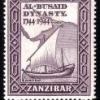Thickness
The frame is made of one wood, commonly a tough, dense wood which is resistant to rot. Some use cheaper woods, oversized to obtain the same stiffness (and similar weight) to the more common woods.
The outer planking is a wood type commonly chosen for toughness and resistance to rot. Can be different below and above the waterline.
Inner planking varies more. It can have differences below and 'between and above' the ports on each gun deck, and in the Orlop and Hold.
Masts, spars and yards are typically made from low density timbers.
For a typical English built ship these would be;
Frame, Oak
Outerplanking, Oak above, Elm or Oak below the waterline.
Inner planking, Oak in the hold and below each port. Fir between and above the ports.
Decks, pine or fir.
Masts, spars and yards. Spruce, Fir, Birch or Poplar, with Baltic Spruce preferred. Light weight was essential to retain even the indifferent range of stability of a ship, and dimensions were as thin as possible and tapered consistent with carrying of the necessary canvas until typical conditions.
As far as I know, only the Fir-built ships, and the US heavy frigates differed substantially from this formula (with the possible substitution of Teak or Mahogany for the Oak framing and outer planking in Indian and Carribean built vessels). The Fir ships have larger timbers, replacing much of the Oak from the standard design of the same type, and the US frigates use Live Oak for the frame alone.
Penetration into Oak, 12lb 4" shot, 734ft/s 22"
Into Elm, ditto, 29"
Into Fir/Birch, ditto, 40"
Into Poplar, ditto, 43"


0 Comments
Recommended Comments
There are no comments to display.
Create an account or sign in to comment
You need to be a member in order to leave a comment
Create an account
Sign up for a new account in our community. It's easy!
Register a new accountSign in
Already have an account? Sign in here.
Sign In Now